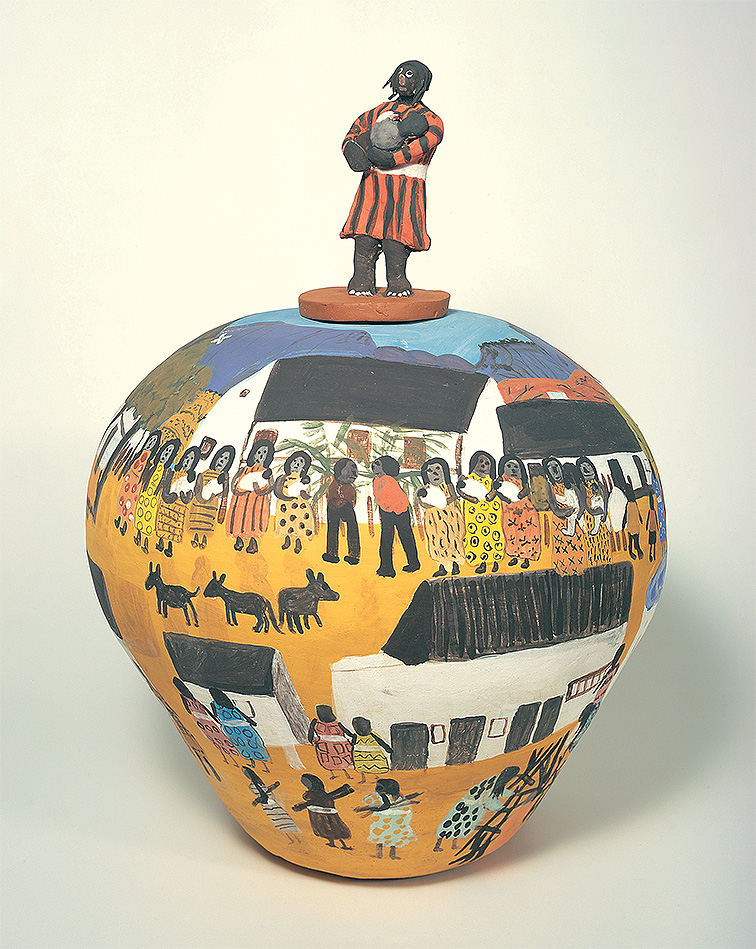We acknowledge the Traditional Owners of the land on which the Queensland Art Gallery | Gallery of Modern Art stands and recognise the creative contribution First Australians make to the art and culture of this country.

Irene Mbitjana Entata / Potter / Arrernte/Luritja peoples / Australia 1946–2014 / Hermannsburg Potters / Pottery workshop / Australia est. 1990 / Pot: Mission days 2005 / Earthenware, hand-built terracotta clay with underglaze colours and applied decoration / 41.5 x 30cm (diam.) (complete); pot: 28 x 30cm (diam.); lid: 14 x 8cm (diam.) / Purchased 2005 / Collection: Queensland Art Gallery | Gallery of Modern Art / © Irene Mbitjana Entata
Irene Mbitjana EntataPot: mission days 2005
Not Currently on Display
Pot: Mission days 2005 is a fine example of an important artistic theme for Irene Entata, also depicted in her paintings on canvas. In her signature naive style, this pot depicts her experience of living in the Lutheran mission at Hermannsburg as a child, a memorable time for Entata and her family due to their close relationship with the missionaries.
The surface of this pot reveals the different types of activities of the desert settlement, providing an insight into day-to-day mission life: women are lined up with their babies to collect their rations, and wood is collected and shared against the backdrop of whitewashed buildings; the pot is topped by the figure of a mother nursing her baby.
Irene Mbitjana Entata is regarded as one of the foremost potters in the Hermannsburg School. She was born at Hermannsburg in 1946 to Rolf Entata, a Luritja/Western Arrernte man, and Millicent Entata, a Walpiri/Luritja woman from Wynparrka. She attended school at Hermannsburg where she did some drawing and plasticine modelling, and recalls watching Albert Namitjira painting.
She first began making pots at Tjamankura with her sister Virginia Rontji in 1990 and became a foundation member of the Hermannsburg Potters. Typically, Hermannsburg pots use the most ancient of pottery techniques, coil-building, and are then smoothed into shape. Irene Entata was a highly dedicated potter and talented animal modeller. Some of the themes she used on her pots were native Australian animals, such as bats, bilbies, ducks, emus, geckos, lizards, mice, parrots, quolls and skinks; introduced animals, such as goats, rabbits, pigs, camels and sheep; exotic animals, such as elephants, reindeers, polar bears, dinosaurs and tropical fish; and native plants including wild blackberries, yams, bush raisins, bush oranges and bush bananas.1 She also painted distinctive landscapes using bold colours with black outlining.
Endnotes:
1. Biography based on ‘Hermannsburg potters: now we are working in clay’. MAGNT, Darwin, 1996, unpaginated.